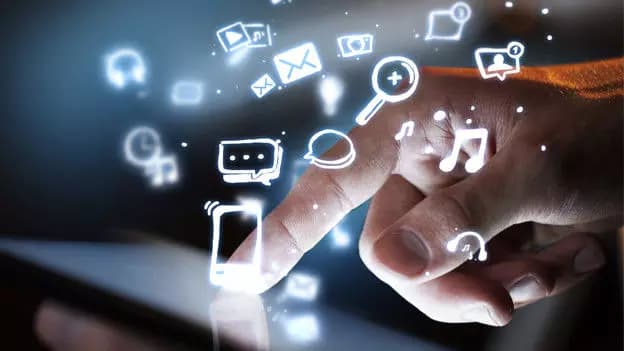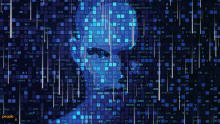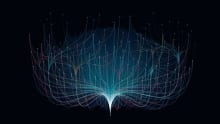The Technology Revolution in HR

The Human Resource Function is at the cusp of new age of automation. The Digital Wave in HR has moved on from subscription based Cloud Talent Solutions and employees at companies are expecting “Consumer Grade Digital Services”. The next few years will continue to challenge our ability and agility to innovate and continuously reinvent, leverage advanced analytics and social media to drive Employee Experience.
As I see, Cognification, the “act of making something smarter” is going to drive the next revolution and will be the most disruptive trend with Artificial Intelligence, Virtual Reality, Blockchain and Internet of Things opening up newer possibilities in the space of HR.
Cognification in my thoughts should create more opportunities than any previous industrial revolution. Kevin Kelly in his book “The Inevitable” has defined Cognification as an application of two technologies combined, which is Artificial Intelligence (AI) and Internet of Things (IoT). He elucidates the synergistic impact of artificial intelligence to connected devices, and demonstrates this impact powerfully with inventive practical examples. For example, this could mean using Cognification for determining the people interventions that may be required to enhance productivity and leadership capabilities through understanding the work patterns, assessing meeting effectiveness, people interactions and decisions. Another interesting use could be to determine peak productivity time and people outages through study of critical parameters of the employee, so as to enhance organizational efficiencies.
Leveraging Artificial Intelligence and Internet of Things for HR
AI, which represents an area in technology that simplifies the way we do things, is being increasingly adopted while carrying out HR functions.
Though they can never replace the human element in human resource management, AI is gradually developing the intelligence that is necessary to source the right fit or predict the next move and help HR professionals take intelligent decisions.
It can be leveraged in screening candidates through analyzing the necessary intricacies and critical success factors in a particular job profile. It could also be put use in onboarding employees through analyzing, engaging and following up with the potential employees to reduce the chance of last-minute offer rejection.
AI also enables personalized learning programs based on employee information skill set, experience, behaviors and learning patterns. It can also provide a customized career path based on the potential, strengths, experience and exposures, career aspiration and learning agility.
I also see significant use of IoT in Engagement, Health and Fitness Tracking and Attendance and Location Tracking. In a recently published article on FoxBusiness by Doug Salvemini, there is a mention of Deloitte Canada equipping a set of volunteers with sociometric badges that measured location, movement, and voice tones to measure stress and analyze the positive and negative aspects of their work life. They used their findings to help redesign their offices and to compose their teams. Another example of incorporating IoT technology is in logistics companies that use sensors on trucks to monitor speed, directions, braking, and idling, among other things. IoT software can help plan more efficient routes, eliminate idling, and schedule truck maintenance in advance thereby significantly reducing fuel consumption, reducing cost of operations as well as contributing to reduced carbon footprint.
Workplace transformation through Virtual and Augmented Reality
Before we go on to understand how VR and AR are going to transform the workplace lets first understand the difference between the two. Virtual reality is a completely immersive environment. This means that when you are locked into VR tech, you can’t see what’s going on around you. Augmented reality provides digital details about the real world around you.
While the potential uses of VR in the workplace have not been fully explored, some possibilities include using them for Interviewing, On-Boarding, Developmental Processes, Talent Engagement & Collaboration and Virtual Meetings. This could include providing candidates with the immersive and engaging experience of the workplace before they take a decision on committing to the role. In on-boarding, this could entail experiencing the multiple workplace locations, encounters with future peers and teams and simulation of the induction modules. In learning, this could mean learning anytime and anywhere in a simulated environment with a VR Set.
At the workplace, AR can enable employees to stay updated about important changes/upgrades to machine or equipment, workplace, provide background on people who are meeting on a call or share real time insights on how to improve workflows. Just for an example, AR can provide workmen with Digital Manuals complete with 3D rendering that can be superimposed onto machines and objects that they are working on and can be applied to machining, assembly, maintenance, servicing and so on and so forth.
Is Blockchain going to drive the next wave of disruption in HR Technology landscape?
As a cross-industry disruptor, Blockchain has the potential to reshape the HR technology landscape. It has to potential to transform some of the HR. A Gartner report “Hype Cycle for Emerging Technologies 2016” (August 2016) ranked Blockchain highly in terms of expectations. It has indicated that Blockchain technology has the potential to kick-start a platform evolution or revolution within the next few years. It has the potential to disrupt industries and make processes more secure, transparent and effective. In short Blockchain provides a decentralized and secure ledger to the participating parties and a method for validating information related to a transaction thereby speeding up the process and cutting out middlemen involved in transactions.
Bitwage has an interesting solution to look at cross border payroll transfers. By combining Blockchain with mobile and Cloud technology, Bitwage facilitates cross-border payments by using Bitcoin as a payments rail, employees ultimately get paid out in their local currency, and Bitwage handles the conversion of Bitcoin to local funds. Another process that Blockchain can support is in verification of information on a candidate’s resume. Blockchain can offer solutions to protect frauds that occur in educational, professional credentials, medical history, address changes, criminal and civil suit records and credit history and tax data. This data could be stored in Blocks and an HR system can digitally accept its authenticity.
In an open talent economy where I see experts getting associated with the organization for a fixed term to solve niche problems or work on projects, Blockchain could enable smart contracting with insights into which skill or problem gets paid at what rate along with details of terms and conditions thereby driving transparency in contracting.
Coexisting with Technology
Rather than worrying about the next wave of technology i.e. AI, IoT, VR, AR, Open Cloud and Blockchain taking over the world, we should embrace the technologies the way we embraced computers and mobile phones. We need to work along with cognified machines rather than fearing losing our jobs. In fact the jobs that will be taken over will probably be deemed as degrading to human beings in the future. Therefore, an entirely new skillset will emerge as possible set of opportunities for the workforce and we would see an evolution of human beings to the next level. So Design Thinking, Creativity, Human Experience and Personal Experience will need to be the forte of the emerging workforce. Hope we all ride the wave rather than sink!
















